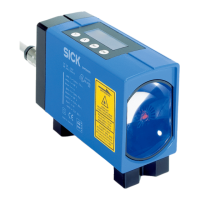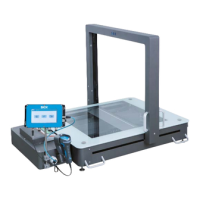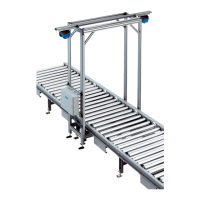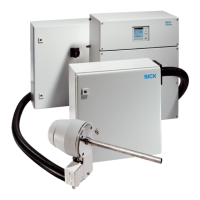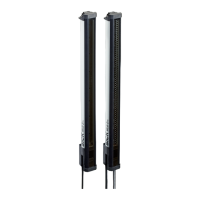What to do if the PWR LED flashes red on SICK Security Sensors?
- Hheidi43Jul 27, 2025
If the PWR LED on your SICK Security Sensors flashes red, it indicates an error. Refer to the "Error messages" on page 66 for troubleshooting steps.
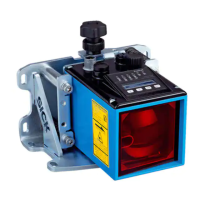
What to do if the PWR LED flashes red on SICK Security Sensors?
If the PWR LED on your SICK Security Sensors flashes red, it indicates an error. Refer to the "Error messages" on page 66 for troubleshooting steps.
Why is the PWR LED flashing orange on my SICK Security Sensors?
If the PWR LED on your SICK Security Sensors flashes orange, this indicates a warning. Consult "Warning messages" on page 65 to identify the cause and how to resolve it.
How to troubleshoot a PWR LED that doesn't light up on SICK Security Sensors?
If the PWR LED on your SICK Security Sensors does not light up, the device may be defective. First, check the supply voltage. If the issue persists, return the device for repairs.
Why is my SICK DL100 Pro device overheating?
If the internal temperature of your SICK Measuring Instruments device is approaching the limit of the permissible range, check the ambient temperature and improve ventilation if needed. Shield the device from radiated heat, such as direct sunlight. If the ambient temperature is low, consider using a heating system for the device. If it is high, consider using a cooling housing.
How to fix low attenuation value on SICK DL100 Pro Measuring Instruments?
If the current attenuation value of your SICK Measuring Instruments device is below the warning threshold, you can clean the optical interfaces like the reflector and the lens. You can also reduce the distance between the measuring device and the reflector, or use a distance measuring device with a larger scanning range.
What to do when the service life of SICK DL100 Pro measurement laser has been exceeded?
If the service life of the measurement laser in your SICK Measuring Instruments device has been exceeded, replace the measuring device.
| Output | Analog |
|---|---|
| Operating Temperature | -10 °C to +50 °C |
| Light source | Laser |
| Output type | Analog |
| Supply voltage | 10 V DC to 30 V DC |
| Housing material | Plastic |
| Connection type | M12 connector |
| Power consumption | ≤ 3 W |
General safety guidelines and warnings applicable to the device operation.
Details on the purpose and scope of the operating instructions.
Defines the various warning and information symbols used in the manual.
Specifies the manufacturer's liability concerning device usage and documentation.
Guidelines for proper disposal and environmental considerations.
Defines the specific applications for which the distance measuring device is designed.
Details prohibited uses and potential hazards associated with misuse.
Specifies the necessary qualifications for operating and maintenance personnel.
Explains the warning labels and laser safety symbols on the device.
Provides essential safety instructions regarding laser radiation.
Details and explanation of the information found on the device's type label.
Illustrates and labels the physical components of the distance measuring device.
Explains how the distance measuring device operates using laser and reflector.
Describes the device's LEDs, display, and control buttons.
Illustrates and explains the device's measured value and menu display modes.
Instructions and warnings for safe transportation of the device.
Recommended environmental conditions for storing the device.
Step-by-step guide for installing the distance measuring device.
General recommendations for proper and trouble-free mounting.
Instructions for selecting and mounting the appropriate reflector.
Guidelines for spacing multiple devices to avoid interference.
Recommendations for arranging the device near data transfer photoelectric sensors.
Procedure for aligning the device using the optional alignment bracket.
Safety warnings related to power supply and handling live parts.
Guidelines for correctly wiring the device and managing cable shielding.
Diagrams illustrating electrical connections for supply and data interfaces.
Explanation of how measured distance values are shown on the device display.
Steps for navigating menus and selecting parameters.
Procedure for selecting and confirming options within the device menu.
Steps for modifying parameter values using the device buttons.
Detailed explanations of various device parameters and their settings.
Overview of the main menu structure and available display options.
Details on the device's software versions (application, communication processors).
Information regarding the device's hardware version.
Settings for the SSI interface, including data format and coding.
Configuration options for the MF1 multifunctional input/output.
Configuration of the MF1 output for speed monitoring and threshold settings.
Procedure for resetting the device to its factory default settings.
Details on the device's IP address, network mask, and gateway settings.
Overview of configurable parameters accessible via the Ethernet interface.
Parameters related to device type, serial number, product code, and versions.
Settings for configuring the display and axes for measurement data.
Configuration options for distance offset, preset values, and resolution.
Describes methods for restarting the device, controlling the laser, and managing the heater.
Information on configuring the device using the Generic Station Description (GSD).
Details on the GSD file content and how to read it into network tools.
Overview of available modules for cyclical data transmission.
Explanation of different module types and their naming conventions.
Detailed descriptions of specific PROFINET IO modules and their parameters.
Description of the 'Distance /i2w' input module, including parameters.
Description of the 'Distance/i1w' input module, including parameters.
Description of the 'Speed/i2w' input module, including parameters.
Description of the 'Distance/i2w, Preset Dyn./o2w' module.
Configuration settings for the SSI interface within PROFINET IO.
Introduction to the SSI synchronous serial interface and data transfer.
Explanation of various data formats supported by the SSI protocol.
Instructions for cleaning the device's front screens and housing.
Regular maintenance tasks and their recommended intervals.
Interpretation of device status based on LED indicators.
Descriptions of warning messages and their potential causes/solutions.
Descriptions of error messages and their potential causes/solutions.
Troubleshooting specific error messages related to the PROFINET IO interface.
Information on authorized repair procedures and warranty.
Guidelines for returning the device for service or analysis.
Detailed measurements and drawings of the device's physical size.
Technical details regarding the device's laser sender and optical components.
Specifications for measuring ranges, accuracy, repeatability, and resolution.
Environmental parameters such as temperature, humidity, and vibration resistance.

